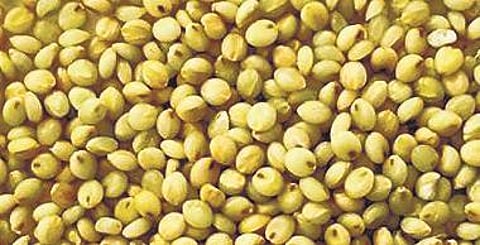

CHENNAI: Through this section, we have explored the health benefits of many millets, well-known and secret gems. The browntop millet is possibly the rarest of these. This millet can be grown in a variety of soils and climates, but mostly grown in the border of Karnataka and Andhra Pradesh.
While the millet is rarely seen as an addition to the diet in Tamil households, you may have heard of its name as Kula Samai or Pula Pul. Even Dr Preeti Raj, co-founder, director and chief nutritionist at Wootu Nutrition Pvt Ltd, has only recently come across this millet. “This millet has never been included on the diet plans I have made since it is so niche. So far, I have only seen it at speciality stores such as Dhanyam organic superstore in Anna Nagar or Thinai Organics in Medavakkam,” she adds.
While browntop millet provides little calcium or iron, it is a powerhouse for protein and fibre. However, the millet requires much preparation and is less palatable to its alternatives, says Dr Preeti. This protein and fibre-rich millet helps deal with several lifestyle diseases, she says as she discusses the several benefits of browntop.
For the gluten intolerant
Like other millets, browntop is also gluten-free and rich in nutrients. Those who suffer from gluten intolerance or wish to have a gluten-free diet can opt for this alternative to rice.
Relieves constipation
It is an enriching source of fibre and magnesium, both of which play important roles to relieve constipation. While the fibre adds heft to the meals, adding pressure to your colon, magnesium allows for smooth relaxation and contraction of the muscles when it is time to pass the faeces.
Diabetic-friendly
Fibrous foods have a low glycemic index, raising one’s blood sugar slower than other foods, hence beneficial for diabetics.
Balance your weight
Fibre-rich foods add weight to your meal and thus, you reach satiety faster. This ensures that the person does not feel hunger pangs. “When we plan a diet for one to lose weight, we restrict calories and ensure a good amount of fibre. You could call this a miracle millet, in that sense,” adds Dr Preeti.
Treats dyslipidemia
Dyslipidemia refers to a condition when cholesterol and triglycerides are high in the body. Fibre plays a crucial role to help the body recover. Our body tends to eat more if the GI of a food is high. Since browntop millet has a low GI, it provides satiety faster, ensuring you don’t overeat. When you eat less, triglycerides are burnt.
Heals gastric ulcers
Our gut has good microorganisms called probiotics. However, they need to be in a specific colony in a specific area of your body. If one is growing at a faster speed than the other, the other bacteria will travel elsewhere in your body, much like a tiger migrating in a forest when it can’t find food. This migration is called dysbiosis which can lead to gastric ulcers and irritable bowel syndrome. The fibre in browntop millet ensures that the bacteria grow naturally in its native area.
NUTRITIONAL BREAKDOWN (per 100g)
Protein: 11.5 g
Fiber: 12.5 g
Minerals: 4.2 g
Iron: 0.65 g
Calcium: 0.01 g
Browntop Millet Spicy Kanji by Krishnakumari Jayakumaar
INGREDIENTS
Browntop millet: 1 cup
Moong dal: ¼ cup; Cinnamon: a small piece
Clove: 1 piece; Elaichi: 1 piece
Fennel: ½ tsp; Jeera: ½ tsp;
Methi seeds: ½ tsp
Mixed vegetables (Onion, tomato, carrot, beans, peas, cauliflower, cabbage)
Ginger: a small piece; Garlic: a small piece
Oil: 1 tsp; Ghee: 1 tsp,
Green chillies: 2 pieces; Salt to taste
Coriander or mint leaves,
Coconut milk (optional)
METHOD
In a heavy bottom pan, add oil and ghee.
Once they are heated, add cinnamon, clove, elaichi, fennel, jeera, methi seeds and chopped vegetables with ginger and garlic.
Saute well and then add green chillies and a pinch of turmeric powder.
To this mixture, add your soaked millet and moong dal with 5 cups of water.
Add salt to taste and mix well. Top with coriander and mint leaves and mix.
You will know it is done when the kanji is soft.
Once done, serve plain or mix with coconut milk.
To make a non-vegetarian version of the dish, include shredded chicken with the vegetable. To balance the dish, reduce the quantity of vegetables.
PREPARATION
Clean, wash and soak the millet for at least six hours.